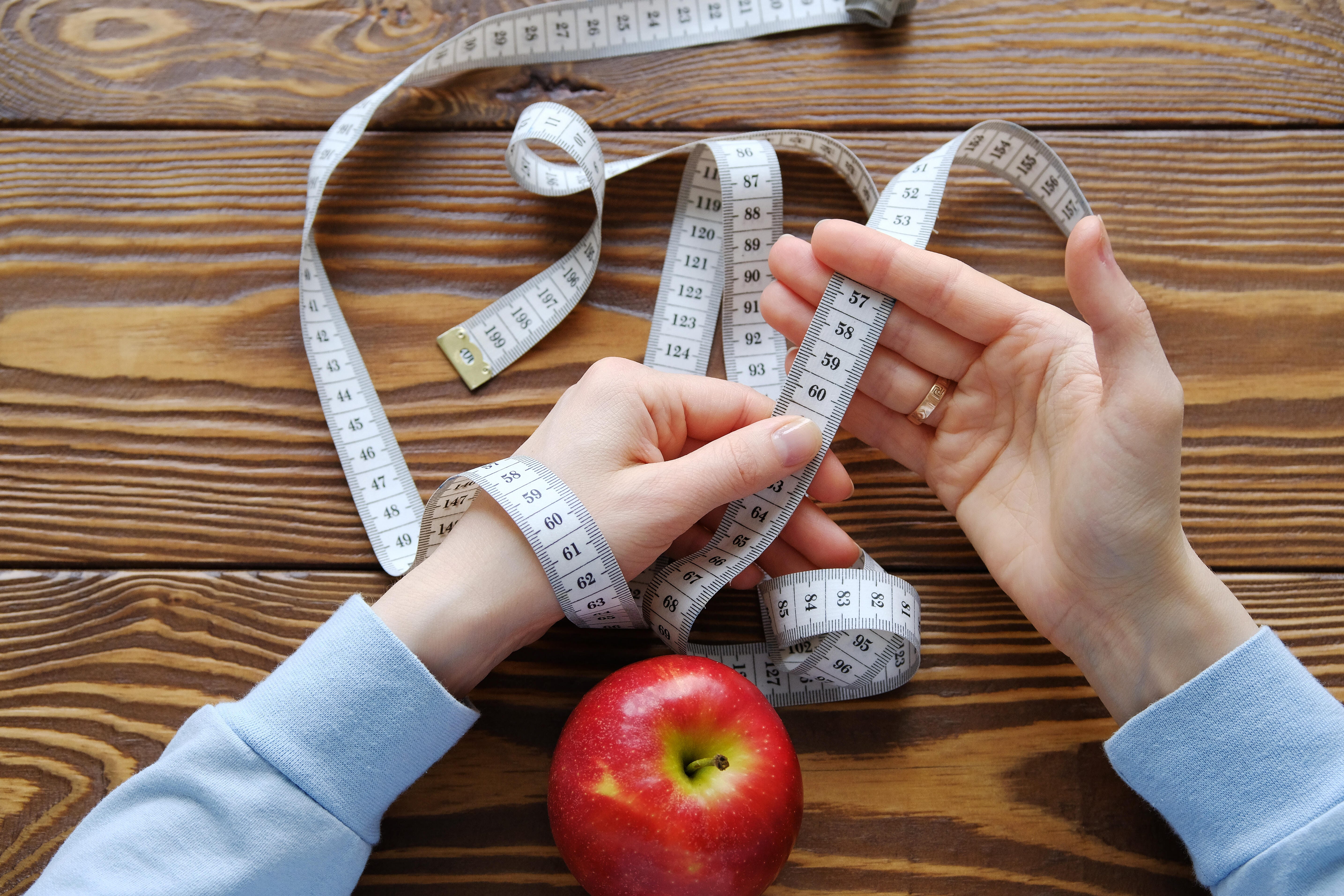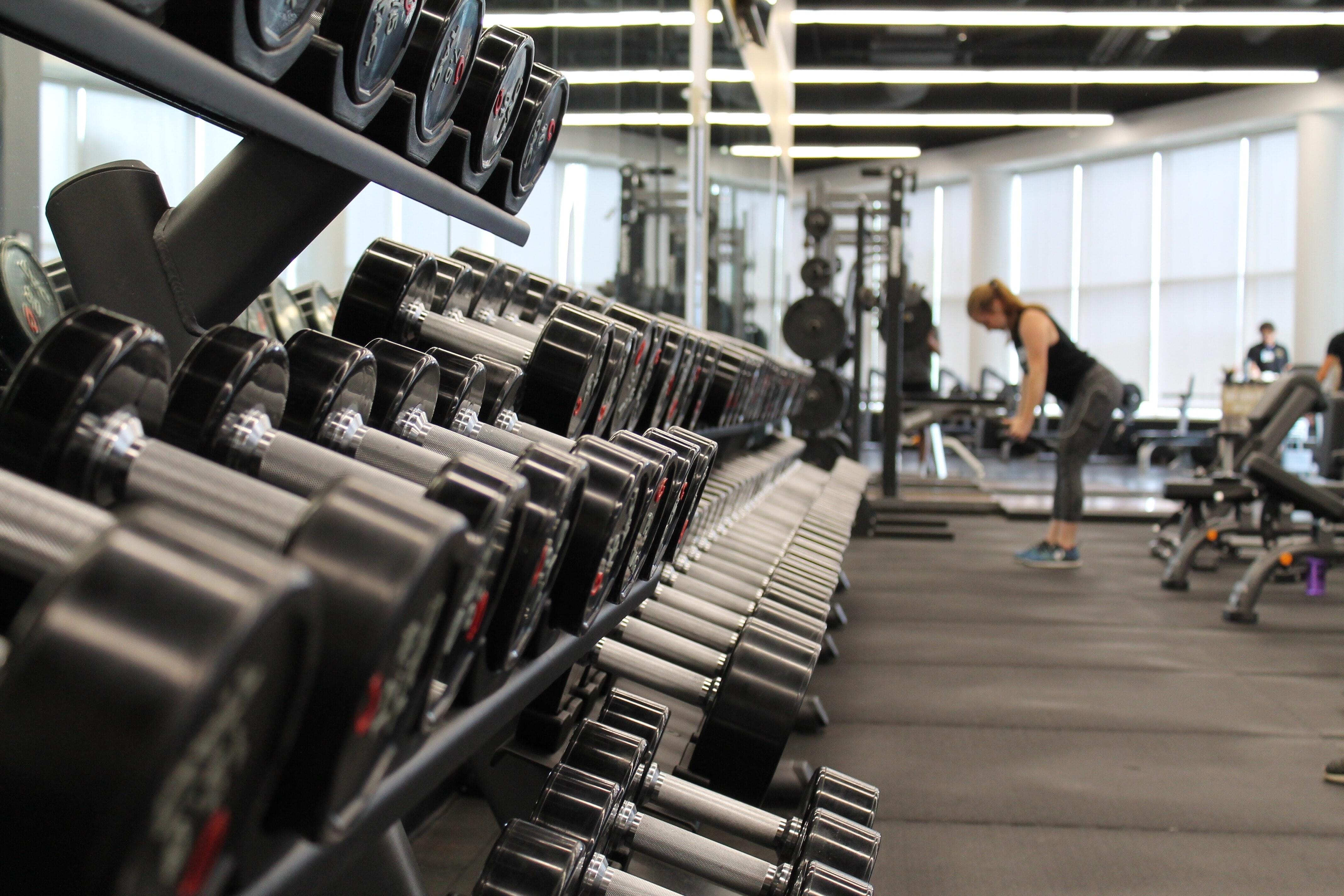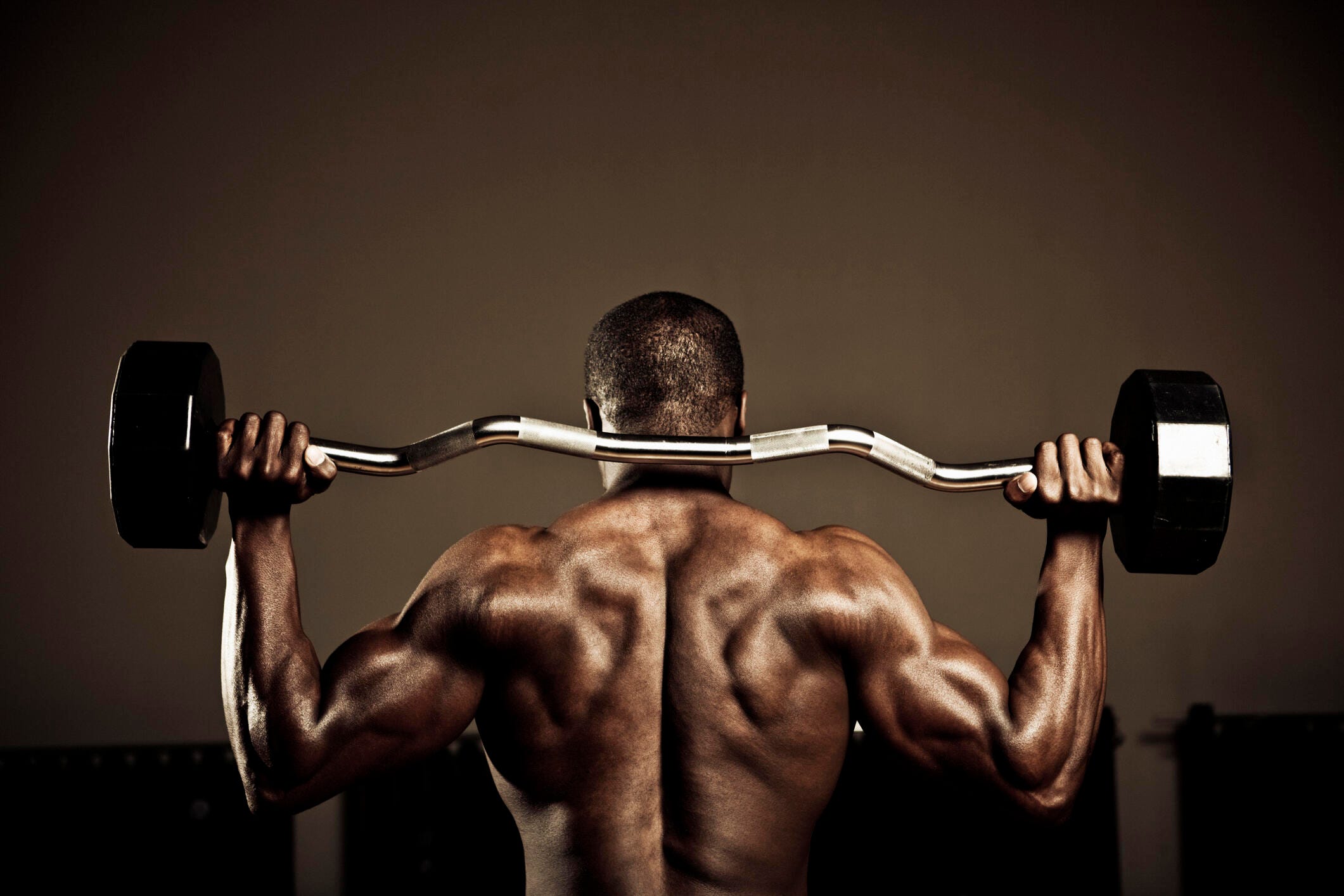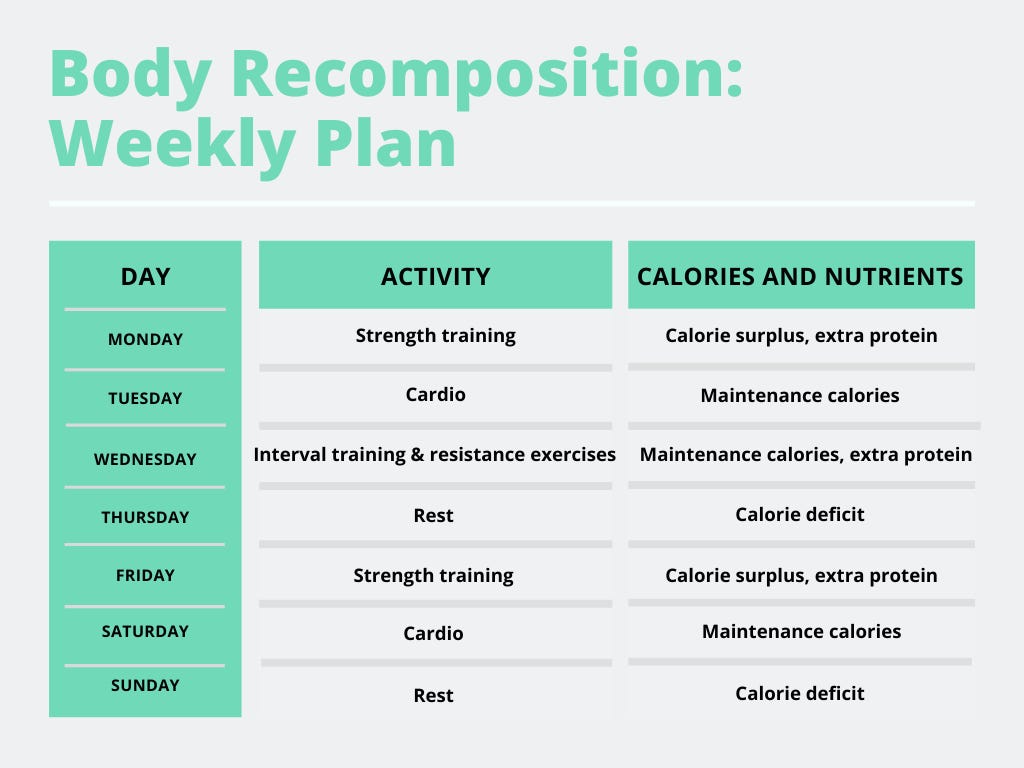Burn Fat Tone Muscle Diet

Lean out, tone up, get ripped... they all mean the same thing: body recomposition.
Getty Images"Get toned" is one of the most common goals personal trainers (including yours truly) hear clients and prospective clients say they're after. Whether they realize it or not, these people are referring to body recomposition, the act of altering your physique by burning fat and gaining muscle at the same time. These people know what they want -- less fat and more muscle -- but they often don't know what it takes to get there.
Body recomposition requires a different approach to health and fitness than the typical weight-loss mindset.
Get the CNET How To newsletter
Receive expert tips on using phones, computers, smart home gear and more. Delivered Tuesdays and Thursdays.
Many people think that true body recomposition is impossible because of this conundrum: To reduce your body fat, you have to eat fewer calories than you burn. But to build muscle, you have to eat more calories than you burn. However, your body is smarter than you may give it credit for, and by keeping a close eye on your diet (specifically when you eat what) and your training, you can absolutely lose fat and gain muscle at the same time.
Read more:Does lifting weights make women bulky?
What is body composition?

Body composition refers to your body fat percentage and lean mass percentage.
Getty ImagesYour body composition is the ratio of fat mass to lean mass in your body. Sometimes, body composition is used interchangeably with body fat percentage, but body fat percentage is just one part of your overall body composition.
Lean mass includes muscle, bones, ligaments, tendons, organs, other tissues and water -- in other words, everything that's not body fat. Depending on what method you use to measure your body composition, you may see water as its own percentage.
Read more: The best body composition scales for 2020
What is body recomposition?
Body recomposition refers to the process of changing your ratio of fat mass to lean mass -- that is, losing body fat and gaining muscle mass. The goal of body recomposition is to lose fat and gain muscle simultaneously, unlike the traditional approach of "bulking and cutting" in which you intentionally put on a lot of weight first (muscle and fat) and then go through an intense calorie deficit to lose the fat and reveal the muscle underneath.
Forget about weight loss

When your goal is body recomposition, ditch the scale and use a tape measure for a better idea of your progress.
Getty ImagesBody recomposition isn't about weight loss; it's about fat loss. On a body recomposition plan, you may maintain your current weight or even gain weight -- remember hearing "muscle weighs more than fat"? This is semi-true. Muscle is denser than fat.
During body recomposition, what changes, instead of weight, is your physique. As you progress through body recomposition, you may notice changes in your body, such as an overall firmer look or that your clothes fit differently. You may even gain weight, but have a smaller physique, at the end of your body recomposition program.
For example, I weigh exactly the same now as I did before I started exercising and eating healthy. I wear smaller clothes, however, and my body has more muscle tone than it did before. I also feel much stronger than before I began a strength training program (a nonaesthetic benefit to body recomposition). So you can ditch the scale, because it doesn't differentiate between fat loss and muscle loss, and weight loss isn't the primary goal with body recomposition.
There's one caveat to consider, though: If you want to lose a large amount of body fat and don't intend to put on much muscle mass, you may lose weight in the long run.
Read more: 6 health metrics that are more important than your weight
Body recomposition is a long game
Because you're trying to do two things at once -- lose fat and gain muscle -- you can't treat a body recomposition plan like a fad diet. Healthy weight loss and healthy muscle gain both take a long time on their own: Put them together and you're in it for the long haul. The slow, steady process of body recomposition offers sustainable results, though, so you'll enjoy your new physique for as long as you maintain those habits.
How does body recomposition work?

Body recomposition is a fine balance between building muscle and losing fat.
Getty ImagesBody recomposition truly comes down to your specific health and fitness goals. Unlike traditional methods of weight loss -- such as very low-calorie diets or periods of really intense cardio exercise -- there's no real protocol for body recomposition.
There are basic guidelines to follow. To successfully change your body composition, you need:
- Cardiovascular exercise for fat loss
- Resistance (weight) training to build muscle
- Overall decrease in calorie consumption to lose fat
- Increased protein intake to promote muscle formation
How to lose fat
Fat loss ultimately comes down to your calorie maintenance. To lose fat, you must eat fewer calories than you burn. Cardiovascular exercise, or combined cardio and resistance exercise, alongside a healthy diet still stands as the best technique for fat loss -- there's just no way around the science. Losing fat in a safe, sustainable way also means having realistic goals and not depriving your body of the nutrients it needs -- disordered eating habits are never worth the risk.
How to build muscle

Building muscle requires resistance training.
Danielle Cerullo/UnsplashTo build muscle, focus on two main factors: weight training and protein consumption. Strength training is essential to changing your body composition -- your muscles won't grow if you don't challenge them.
Additionally, you can't build muscle without being in a caloric surplus, so you must eat more calories than you burn to promote muscle growth. While all macronutrients are important, protein is especially important for building muscle. Without enough protein, your body will struggle to repair the muscle tissues that get broken down during weight training.
Plus, studies show that a high-protein diet can help with losing fat and gaining muscle at the same time. Research shows that, while in a calorie deficit, consuming more protein than you normally might can help preserve your lean body mass (a.k.a. muscle mass) than being in a calorie deficit without changing your protein intake.
In people who have already been following a strength training program, increasing protein intake and following a heavy weightlifting routine leads to improvements in body composition.
Read more: The 7 most important strength-training moves for building muscle
Put it all together: calorie cycling

Body builders are known for their ability to achieve insanely lean and muscular physiques. This obviously isn't everyone's goal, but it's a good example of what's possible with body recomposition.
Getty ImagesIt sounds confusing that you have to eat fewer calories than you burn to lose fat, but you have to eat more calories than you burn to build muscle. It's actually pretty simple when you learn about the concept of calorie cycling: modifying your calorie and macronutrient intake to match your goal for the day.
The first thing you need to do is figure out your maintenance calories, or how many calories you burn on a day you don't exercise. You can see a certified personal trainer, dietitian or other health professional to find this number, or you can use an online calorie calculator. This one from Mayo Clinic uses the Mifflin-St Jeor equation, which pros consider the gold standard.
On days that you do cardio exercise, you should consume enough calories to meet your maintenance number. Consuming maintenance calories on a cardio day ensures that you're in a slight deficit to promote fat loss, but not in a deficit so large that your body starts using muscle tissue as fuel. We want the muscle!
Read more: Should you lift weights or do cardio first?
On days that you do a strength training workout for 30 minutes or more, eat more calories than your maintenance number with a focus on protein. Depending on how much muscle you want to put on and how quickly you want to gain it, add 5% to 15% to your maintenance calories.
On days that you don't work out at all, eat slightly less than your maintenance calories -- decrease that number by 5% to 10%. This number is called your "rest day calories."

Think of it this way: Every day, you consume new calories and your body must decide what to do with those calories. Your body essentially has three basic choices: immediately burn the calories for fuel, use them to repair and build muscle tissue or store them as fat.
If you're looking for a body transformation, you don't want to store calories as fat. But you do want your body to use new calories to repair the muscles you broke down during weightlifting workouts.
So, you'll eat more calories (and protein) on weight-training days so your body uses those calories and nutrients to fuel muscle repair, and thus muscle growth. And you'll eat fewer calories on cardio days and days that you don't work out because you want your body to use the fat it already has as fuel -- not to use new calories as fuel.
By combining these two tactics, you can successfully achieve body recomposition.
Ready to hit the gym? Make sure you get the best pair of shoes for your workout.
The information contained in this article is for educational and informational purposes only and is not intended as health or medical advice. Always consult a physician or other qualified health provider regarding any questions you may have about a medical condition or health objectives.
Source: https://www.cnet.com/health/fitness/body-recomposition-how-to-lose-fat-and-gain-muscle-at-the-same-time/




:max_bytes(150000):strip_icc()/KatarinaExtendableRubberwoodSolidWoodDiningTable-8b8aed7755e24991b7ae5adad6a1cbb1.jpeg)
:max_bytes(150000):strip_icc()/fdd483c2-54e4-4fba-9569-7d2d022ff56b_1.3ae52e03df4790f2ca42ce6b481c6f5c-c015d68ca69e4c36b7c3760eefb2d661.jpeg)
:max_bytes(150000):strip_icc()/toscana-extending-dining-table-z-93711c34febd4f109b7398c61d78a84b.jpeg)
:max_bytes(150000):strip_icc()/81blMV-LdhL._AC_SL1500_-c7576b5cc5c444fcaffc2d5d84d95ef9.jpg)
:max_bytes(150000):strip_icc()/Alondra42TrestleDiningTable-3c3b825388f447f4a5bfc6aa0d0e195c.jpeg)
:max_bytes(150000):strip_icc()/81JHECenOKL._AC_SL1500_-d2328ec694304f9fa0ff4cf782c36460.jpg)
:max_bytes(150000):strip_icc()/distressed-walnut-home-decorators-collection-kitchen-dining-tables-1514000950-40_600-ecdc9e2840dc4578836af5c1844075a0.jpeg)
:max_bytes(150000):strip_icc()/Devera47TrestleDiningTable-b160dd2cac574ded9352c1b53e7b6144.jpeg)
:max_bytes(150000):strip_icc()/26bb4452-65dc-4aea-a42c-8468b220fb32_1.45d329ec0a606f531aad2eaac66a3956-afd212cb4871490c8086f9e241b4147f.jpeg)
:max_bytes(150000):strip_icc()/Horwich35.50PedestalDiningTable-b8d45a105ed646b2804bb2bb36bf59c5.jpg)


 Deluxe dining room with a round dining table and purple velvet chairs that sit on a patterned area rug. It is lighted by a fancy chandelier that hung from the tray ceiling.
Deluxe dining room with a round dining table and purple velvet chairs that sit on a patterned area rug. It is lighted by a fancy chandelier that hung from the tray ceiling. A warm pendant light hangs over the round wooden table in this dining room showcasing floral cushioned chairs and white framed windows inviting natural light in.
A warm pendant light hangs over the round wooden table in this dining room showcasing floral cushioned chairs and white framed windows inviting natural light in. Gorgeous dining room illuminated by a candle chandelier and wall sconces mounted above the white wainscoting. It has a classy dining set and a large antique mirror which creates a larger visual space to the room.
Gorgeous dining room illuminated by a candle chandelier and wall sconces mounted above the white wainscoting. It has a classy dining set and a large antique mirror which creates a larger visual space to the room.
 An open dining area features gray modern chairs and a light wood dining table illuminated by white industrial pendants. It is situated beside the staircase sharing space with the kitchen.
An open dining area features gray modern chairs and a light wood dining table illuminated by white industrial pendants. It is situated beside the staircase sharing space with the kitchen. A framed wall art hangs above the console table in this dining room with tray ceiling and hardwood flooring topped by a tasseled area rug. It has a wooden dining set lighted by a chandelier that hung from the tray ceiling.
A framed wall art hangs above the console table in this dining room with tray ceiling and hardwood flooring topped by a tasseled area rug. It has a wooden dining set lighted by a chandelier that hung from the tray ceiling. Spacious dining area with a round dining table and beige cushioned chairs over the rich hardwood flooring. It is accompanied by a classic chandelier and a wooden console table filled with framed photos and lampshades.
Spacious dining area with a round dining table and beige cushioned chairs over the rich hardwood flooring. It is accompanied by a classic chandelier and a wooden console table filled with framed photos and lampshades. Beige dining room surrounded with arched windows and white framed door that leads out to the porch. It has floral cushioned chairs and a dark wood dining table lighted by a vintage chandelier.
Beige dining room surrounded with arched windows and white framed door that leads out to the porch. It has floral cushioned chairs and a dark wood dining table lighted by a vintage chandelier. A round pendant light illuminates this open dining area boasting a round dining table and light wood chairs that blend in with the wide plank flooring.
A round pendant light illuminates this open dining area boasting a round dining table and light wood chairs that blend in with the wide plank flooring. White dining room with beamed ceiling and glass-paneled windows overlooking the lush green outdoor with a sparkling pool. It has a candle chandelier and a glass top dining table paired with white wingback chairs.
White dining room with beamed ceiling and glass-paneled windows overlooking the lush green outdoor with a sparkling pool. It has a candle chandelier and a glass top dining table paired with white wingback chairs. An all wood dining room showcases a cozy dining set placed in between the built-in bench and open fireplace. It is lighted by a white dome pendant that hung from the wood beam ceiling.
An all wood dining room showcases a cozy dining set placed in between the built-in bench and open fireplace. It is lighted by a white dome pendant that hung from the wood beam ceiling. A white runner lays on the black wooden table in this dining room offering round back chairs and a floral chandelier that hung from the coffered ceiling.
A white runner lays on the black wooden table in this dining room offering round back chairs and a floral chandelier that hung from the coffered ceiling. Modern dining room designed with a large framed wall art and a contemporary chandelier that hung over the white dining table contrasted by black leather chairs.
Modern dining room designed with a large framed wall art and a contemporary chandelier that hung over the white dining table contrasted by black leather chairs. A stylish drum pendant illuminates this green dining room featuring a round dining set accompanied by a built-in bench and white corner cabinets.
A stylish drum pendant illuminates this green dining room featuring a round dining set accompanied by a built-in bench and white corner cabinets. Airy dining room with a large vase and modern gray chairs surrounding a glass dining table topped with a minimalist bowl.
Airy dining room with a large vase and modern gray chairs surrounding a glass dining table topped with a minimalist bowl. A double-sided fireplace faces the glass top dining table and stylish blue chairs in this dining room illuminated by a modern chandelier and recessed ceiling lights.
A double-sided fireplace faces the glass top dining table and stylish blue chairs in this dining room illuminated by a modern chandelier and recessed ceiling lights. A rattan pendant light complements the wicker chairs in this dining room decorated with a gorgeous flower vase and ocean artworks mounted on the red wall.
A rattan pendant light complements the wicker chairs in this dining room decorated with a gorgeous flower vase and ocean artworks mounted on the red wall. Ample natural light flows in through the framed windows in this serene dining room showcasing a shaded chandelier and a round dining table paired with wooden chairs.
Ample natural light flows in through the framed windows in this serene dining room showcasing a shaded chandelier and a round dining table paired with wooden chairs.
 Modern dining room illuminated by a glass pendant light that hung over the glass top dining table surrounded by black chairs on a dark wood plank flooring.
Modern dining room illuminated by a glass pendant light that hung over the glass top dining table surrounded by black chairs on a dark wood plank flooring.
































